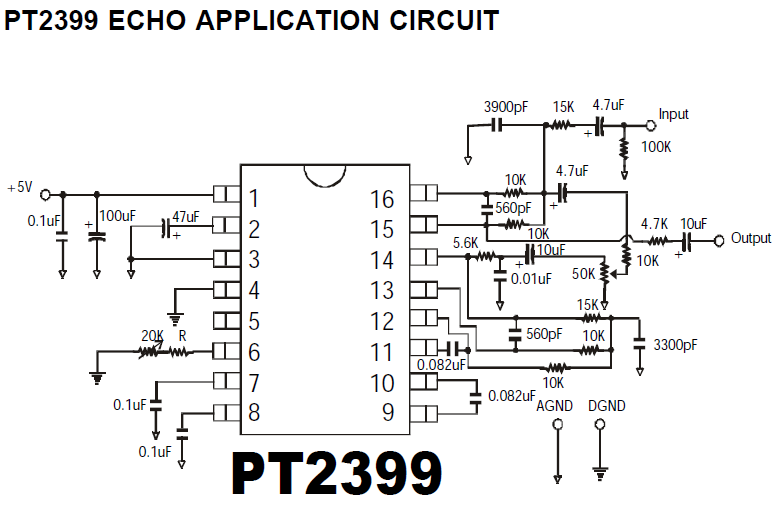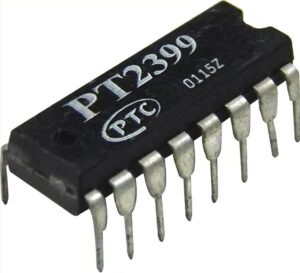Tip Top of the marnin’ to you folks! It’s Sunday, so it’s time to spew some sentences onto the old bloggert, see if I can’t not fill up a page for your entertainment.
So what are we tooling around about today? Well were talking delay!
That rhymed on accident, isn’t life grand?
This project started because I wanted to design something around the PT2399 delay chip. I had a few laying around, and I’ve heard some cool stuff come out of these guys, so why not give it a throw? Especially after reading the deep dive electro-smash gave the PT2399, I was feeling confident I could get something decent sounding through these chips.
So I jumped on Tayda Electronics, ordered myself a bunch of strange valued parts, and got to building the application Echo circuit on a breadboard.

One thought was to have something like a 100k pot controlling the delay time, this way things would get gross and distorted when cranked up. I didn’t really want a “clean” or “cute” sounding delay pedal. I wanted something glitchy.
Another thought was to have a dual stage Echo, one dirty with that 100K pot and then one with a more reasonable 25K pot controlling the delay time.
Sadly my breadboard adventures didn’t end the way I was hoping, and I ended up moving on to other more time sensitive projects. So the PT2399 delay brainstorming took a backseat, and I started dreaming of other ways to make a glitchy delay.


I still like the idea of a PT2399 based delay circuit, but I stumbled across some Teensy action while doing some research for other projects. A clever lad over at a website called Cutlasses put together something he calls the “Glitch Delay”. Here’s a link to it.
This got me noodlin’ on the thought of using a Teensy to create a delay pedal. It would be a little less complicated because the Teensy would be taking care of pretty much everything. It would take a little coding, but Teensy makes that pretty simple.
This route is pretty tempting. The option of adding some extra RAM chips to the Teensy allows some pretty long delay times, which would let things get whacky real fast. Here’s a thread on adding RAM to the Teensy to achieve longer delay times.
The other thought I had was to not make a “typical” delay pedal. Not even a delay pedal really, more of a straight “glitch” pedal.
That doesn’t describe my thought very well, does it dear reader? Forgive me, at least this time. It is the holiday season after all.
My thought was to have the footswitch be a momentary switch rather than a latching switch, so that when you pressed down on the pedal, it would blow a quick blurt of weird delayed sound out, and when you let go, it would just bypass the pedal entirely.
The other thought I had along the same lines was to have two momentary switches, with the extra switch “loading” sounds into the “glitch blast”. Once you loaded sounds into the “glitch blast”, you could then use the other momentary foot switch to initiate the “glitch blast”. These are all very technical terms, so excuse me if my verbiage is blowing your mind.


So this is where the brainstorming is at for now. Once the holidays are over and I’m back in front of all my toys, it will be time to start actually breadboarding and designing some circuits. Maybe I’ll have a PT2399 circuit blasting into the Glitch Delay?! Who knows.
Any-who, thank you for coming along on this ride for me, as always. I swear I’m still working on Deckard’s Dream, I will be dreaming of electric sheep before we know it. Typhoon is another guy on my list, but who knows, maybe Clouds 2 will come out before then and crush my dreams in the best way possible.
Either way, have a beauty week and keep it samesies out there! See you next Sunday.
